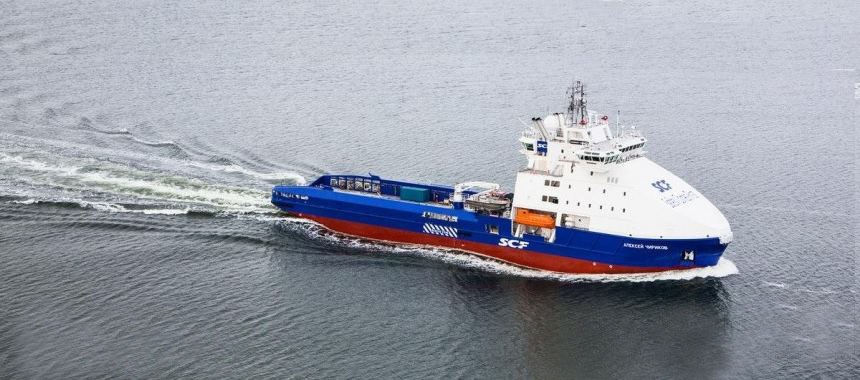A new foreign vessel for a Russian company

At the Finnish shipyard Arctech Helsinki Shipyard on April 11, 2013, an Arctic-type marine vessel of the draft NB 507, which was named after the Russian navigator Alexei Chirikov, was launched.
The vessel will be handed over to the customer, Sovcomflot, Russia's largest shipping company, next week, where it will continue its journey to the Far East to the Arkutun-Dagi oil field.
The Finnish shipyard Arctech Helsinki Shipyard built two Arctic marine supply vessels for the Russian company. The contract was signed in 2010 and in December 2012 the first icebreaker NB 506 Vitus Bering was transferred to its owner.
The main function of the new icebreaking vessels is the technical supply of the oil producing offshore platform located at the Arkutun-Dagi field, as well as its protection against freezing by ice. For this purpose, marine vessels are designed taking into account extreme environmental conditions at a temperature of minus 35 degrees Celsius. Icebreaking capabilities of ships are extremely high — independent seaworthiness is maintained at an ice thickness of up to 1.7 meters.
The ceremony of the name of the supply vessel Alexey Chirikov at the shipyard took place with observance of all ancient traditions. The event was attended by the President of the Republic of Finland Sauli Niinisto, Russian Ambassador Alexander Rumyantsev, as well as top management of Sovcomflot and STX Finland. The godmother of the ship was Elena Korniychuk, chief accountant of Sovcomflot.
The NB icebreakers have a length of 99.9 m and 21.7 m in width. Four diesel engines produce a total capacity of 17,680 hp. Operating these sea vessels as multi-purpose, they are able to transport various types of cargo, as well as equipped with all necessary equipment to ensure the fight against fires, the localization of oil spills and other substances and the implementation of rescue operations.
- Comments
 en
en ru
ru uk
uk
